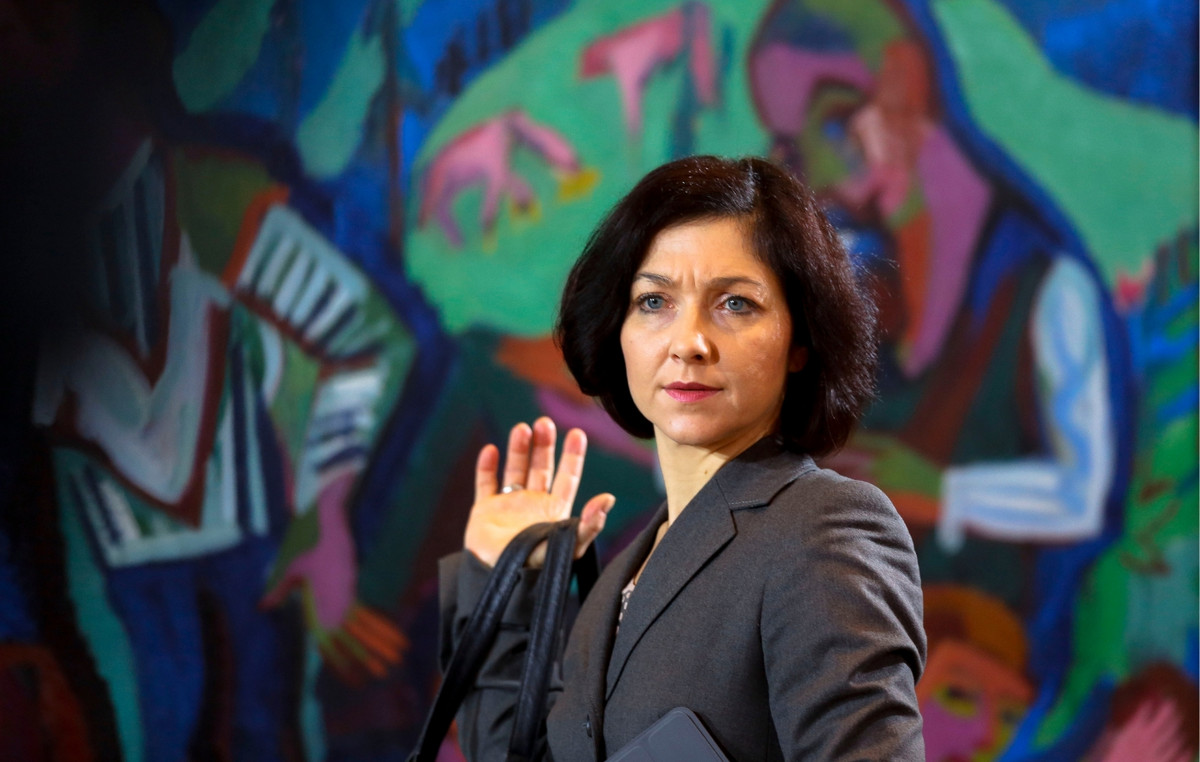THE digital money recently entered the radar of central banks around the world, including Brazil.
Also called CBDC (Central Bank Digital Currency), the asset has the same value as physical money.
In the case of Brazil, the technology is being studied by the Central Bank. The institution announced this month, through the National Federation of Associations of Central Bank Servers (Fenasbac), the creation of a laboratory to evaluate possibilities for a Brazilian version of the CBDC, which would be called the digital real.
The project — called the “LIFT Challenge” — aims to receive practical ideas for its implementation in the country. Testing should begin by the end of the year.
The expectation is that the launch will be made here in 2024, according to Rodrigoh Henriques, leader of financial innovations at Fenasbac, in an interview with CNN Brasil Business.
According to the expert, central banks are seeking to digitize each country’s currency to make local economies more efficient.
The vision is the same for Carlos Eduardo Gomes, Head of Research at Hashdex. “Digitization makes bureaucratic processes more efficient and brings productivity. And ‘for better or worse’ dealing with paper is very costly, as is the use of armored cars and machinery for issuing banknotes”, he says.
“With digital money, BCs are able to manage transactions in a more practical and economical way, and end up having a much more immediate and transparent control”.
What changes?
At first, the implementation of the digital real would not bring radical changes in people’s routine, explains Henriques, from Fenasbac. That’s because, according to him, Brazilians are already used to making digital transactions. “(the use of digital real) would be similar to what we already do with Pix”, he says.
The Central Bank told the CNN Brasil Business that the digital real focuses on online payments, including day-to-day payments, so its impact on the demand for paper money should not be relevant, at first.
“Other opportunities may arise in the future”, comments Eduardo Gomes, such as loans in mobile applications and the optimization of digital contracts. “Or any other type of financial transaction, taking advantage of blockchain, digital currencies and decentralized finance, will depend on the decision of each government”.
The Brazilian BC, when commenting on the digital real, has already said that customers would have technological wallets in their bank accounts, in which the asset would be deposited. In this way, Brazilians will be able to use the amount to make purchases and payments in a digital way, without being able to withdraw the amount in paper money.
“The world is now fully digital, and increasingly mediated by technologies, there would be no reason for the financial sector to be any different”, says Henriques.
However, experts say it is difficult to define exactly how digital currencies will impact society and local economies, as the structures of projects around the world are still new.
What do BCs gain from this?
The interest of BCs in digital currencies is not only linked to the modernization of the system. There are “deeper” reasons involved in this process, according to Fernando Nogueira Costa, professor at Unicamp’s Institute of Economics and former vice president of finance and capital markets at Caixa Econômica Federal.
“Central banks seek national sovereignty, and one of the mechanisms to achieve this result is the monopoly of issuing paper money”, he says.
Brazil today, for example, imports part of its paper money, since the Casa da Moeda alone does not meet all the country’s demand. This decentralization of production, according to experts, can weaken the local financial system, since the delivery of physical money is at risk, such as occasional instabilities in the producing country, deviations and other factors that are beyond the control of the BC.
In addition, Nogueira explains that the digital currency, regardless of the country where it is used, will have the function of improving the control of inspection by BCs over local economies. “The control of digital transactions extends the control of central banks over the economy of their countries”, he says.
“When weapons are seized in favelas, for example, the criminal acquisition was most likely not made with money that could be monitored by the Central Bank, but with cryptocurrency or private currencies, which do not pass through the institution,” he says.
Digital currencies around the world
About 91 countries, from Saudi Arabia to China, are already studying the technology, according to research by the Atlantic Council. The survey reveals that, of this amount, 17% are already developing the technology, 16% are with pilot projects and 10% have already launched the digital currency.
Nigeria was the latest country to launch a CBDC, e-Naira, in October. China has also launched pilot projects for the digital currency, and transactions totaling more than 2 billion digital yuan (US$300 million) have been carried out.
The chairman of the People’s Bank of China (PBoC), Yi Gang, said recently that the bank will continue to “prudently” continue to develop a digital yuan and improve its design.
However, Chinese central bank vice president Fan Yifei said problems in its transaction rules and payment system still needed to be resolved.
At the same time, the Fed (Federal Reserve, the US central bank, the country that occupies the post of largest economy in the world), last week listed the risks and benefits of technology.
“While a CBDC can provide a secure digital payment option for households and businesses as the payment system continues to evolve and could result in faster payment options across countries, there can also be downsides,” Fed officials wrote in a report. released on January 20.
risks of challenges
Challenges, according to the Fed, include maintaining financial stability and ensuring that the digital dollar “complements existing means of payment,” the Fed said. Fed Chairman Jerome Powell said “the document is not intended to advance any outcomes. , nor signal that the BC will make decisions on the issuance of a CBDC”.
The USA enters the survey of the Atlantic Council, as one of the countries studying to launch a CDBC.
The Swiss National Bank also reported last week that it sees no benefit in issuing a digital currency.
“We believe that the risks outweigh the benefits”, declared member of the board of the Swiss Central Bank, Andrea Maechler, at a financial conference held in Frankfurt, saying that a digital currency implies that central banks assume the risks of the private sector and that there could be an increase the risk of bank runs.
“This does not mean that the SNB (Swiss BC) is not interested in CBDCs, but our focus is on looking at the role that CBDCs can play,” said Maechler, referring to their use in transactions between financial institutions such as banks.
Analysts at the Atlantic Council point to several challenges for implementing digital currencies, and say that each country needs careful consideration before launching a CBDC.
“Citizens can withdraw a lot of money from banks at once and buy CBDCs, triggering a bank run; centralizing, through the government, a system designed to be private can generate reaction from users and create cybersecurity risks; and regulatory processes are not updated to deal with new forms of money and need to be more robust before adopting this technology,” he says.
See below how the discussion about digital currencies around the world is:
*With information from Reuters and Fabricio Julião, from CNN Brasil Business
Source: CNN Brasil
I am Sophia william, author of World Stock Market. I have a degree in journalism from the University of Missouri and I have worked as a reporter for several news websites. I have a passion for writing and informing people about the latest news and events happening in the world. I strive to be accurate and unbiased in my reporting, and I hope to provide readers with valuable information that they can use to make informed decisions.







